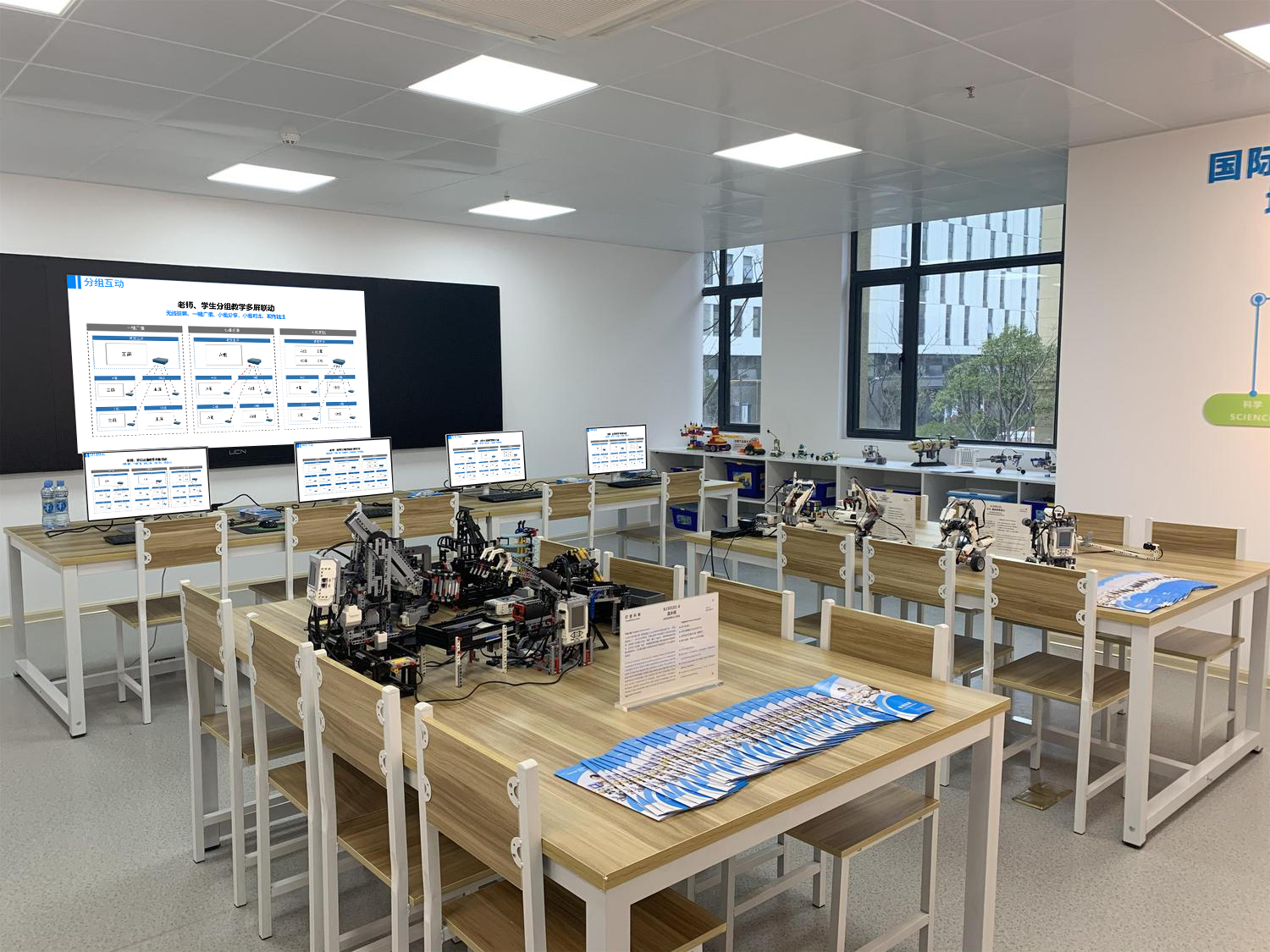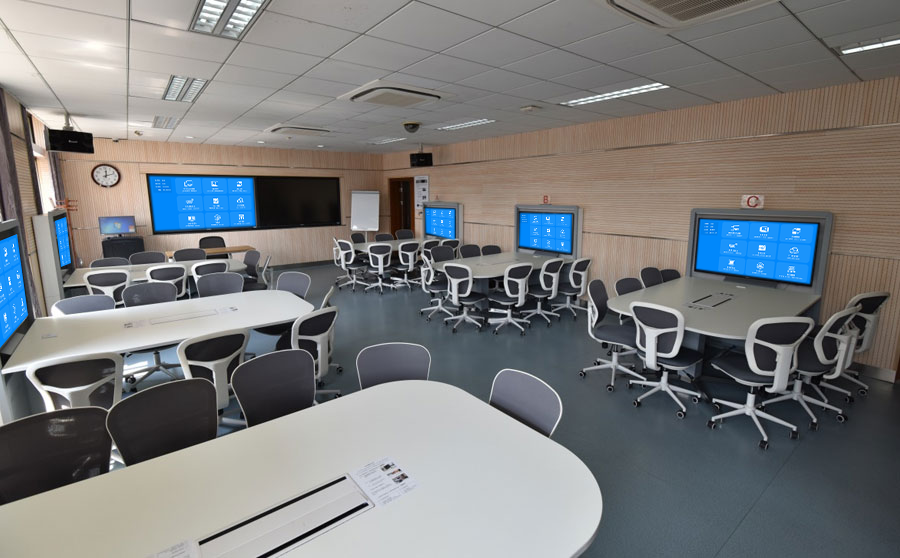Multi-Screen Collaboration: A New Paradigm for Efficient Interconnection
Multi-screen collaboration has been upgraded from a “simple device-splicing” to an “intelligent ecosystem of seamless data flow.” By breaking down the barriers between phones, computers, tablets, and large screens, it allows information to flow between multiple terminals on demand, redefining the logic of efficiency in scenarios like office, design, education, and home.
Office Scenarios: A Hub for Cross-Terminal Collaboration
Core Pain Points and Breakthroughs
In a traditional office, transferring files between a phone, computer, and conference screen relies on USB drives or cloud synchronization, and frequent switching between multiple devices is a common issue. The multi-screen collaboration solution builds a “one core, many terminals” architecture, with the computer as the hub and the phone, tablet, and large screen as extensions, achieving real-time data intercommunication.
- Cross-Screen Drag-and-Drop: A photo of meeting minutes taken with a phone can be directly dragged into a document on the computer. A PPT edited on a computer can be projected onto a large conference screen without saving, and the changes are updated synchronously, eliminating more than 5 file transfer operations.
- Split-Screen Load: When working on a complex project, the computer’s main screen displays core data, a tablet displays reference materials in a split-screen view, and a phone receives real-time email reminders. The three terminals have clear divisions of labor, increasing task processing efficiency by 40%.
- Remote Linkage: When working from home, a computer can mirror to a company’s conference screen. A phone can act as a microphone and camera to participate in the discussion, and a tablet can annotate a shared document, making remote collaboration feel like being in the same room.
Hardware Adaptation
- Personal Workstation: A laptop + a phone + a 13-inch tablet, with a wireless module to achieve three-screen interconnection, is suitable for multi-tasking during independent work.
- Team Conference Room: A desktop host + a 65-inch touch screen + 4 employee terminals support simultaneous annotation on a phone and tablet after content from the computer is mirrored, forming a “presenter – supplementer” collaboration chain.
Design and Creation: A Multi-Terminal Creative Workshop
Workflow Innovation
In the design industry, material collection, sketching, and rendering need to be done on different devices. The multi-screen collaboration solution streamlines the entire process, allowing ideas to go from conception to implementation seamlessly.
- Material Aggregation: A reference image viewed on a phone can be pushed to a tablet’s drawing board with one click. A computer can retrieve a hand-drawn sketch from a tablet for digital processing. Materials from all terminals are automatically categorized into a cloud folder, preventing files from being scattered and lost.
- Real-Time Preview: When a 3D designer adjusts model parameters on a computer, the 4K large screen simultaneously displays the rendering effect. A tablet can be used to annotate revision suggestions, and a phone can be used to take photos of real-life details as a reference for adjustments, allowing for multi-dimensional verification of the design proposal.
- Cross-Software Collaboration: When a PS file is being edited on a computer, a vector graphic in AI format can be edited on a tablet. Both can synchronize layers in real time via a collaboration hub, preventing quality loss caused by format conversion.
Device Combination
- Small Studio: A high-performance host + a 27-inch drawing screen + a tablet + a phone, which meets the needs of a single person’s entire design workflow.
- Design Team: A workstation is connected to a large video wall. Team members can mirror their individual proposals from their tablets and compare and annotate them on the large screen, shortening the proposal review time by 60%.

Smart Education: A Multi-Terminal Interactive Classroom
Scenario Restructuring
A traditional classroom is centered around the teacher’s large screen. The multi-screen collaboration solution builds a three-dimensional interactive network of “teacher terminal – student terminal – public terminal,” making knowledge transfer more holistic.
- Layered Teaching: A teacher uses a computer to control the teaching pace, and the large screen displays core content. Students’ tablets receive personalized practice questions (basic/advanced), and the answer data is fed back to the teacher’s terminal in real time, enabling “one-on-one” tutoring.
- Resource Linkage: In a history class, the computer plays a documentary clip, the large screen displays a timeline, and students use their phones to search for related historical materials and mirror them to a group screen, forming a knowledge matrix of “video – timeline – details.”
- Dynamic Evaluation: During a group report, the presenter can mirror their presentation from a tablet, and other members can submit supplementary points from their phones. The teacher’s terminal compiles these in real time and projects them onto the public large screen, shifting the evaluation dimension from “outcome” to “process.”
Hardware Deployment
- Regular Classroom: A teacher’s computer + a classroom’s large screen + students’ tablets, which achieve low-latency collaboration over a local area network.
- Innovation Lab: It is equipped with a programming host + an experimental data screen + student terminals. Programming code is written on the computer, and experimental data is displayed on the data screen. The two are linked to verify the programming logic, improving innovation efficiency.
Home Scenarios: A Multi-Terminal Entertainment Ecosystem
Experience Upgrades
In home entertainment, multiple devices are often in an “isolated” state. The multi-screen collaboration solution allows the TV, computer, phone, and speakers to form a linked ecosystem, meeting diverse needs.
- Cross-Screen Resumption: An unfinished movie on a phone automatically resumes playback on the TV when you get home. When you use the computer to look up actor information, the TV screen pauses, and it automatically resumes after you finish, so the viewing experience is not interrupted.
- Interactive Games: The screen for a console game is displayed on the TV, a phone acts as a motion controller, and a tablet displays game guides. For multi-player games, it supports up to 4 phones operating simultaneously, increasing the sense of participation.
- Smart Linkage: When a family member is looking at a recipe on their phone, the kitchen TV simultaneously displays the steps, and the computer plays background music. Multiple terminals automatically coordinate according to the scenario, simplifying daily routines.
Hardware Combination
- Basic Home: A smart TV + a phone + a computer, which use home Wi-Fi to achieve content flow and control.
- Smart Home: It is equipped with a central control screen + multi-room split screens + smart speakers. After a scene mode is set on the phone, all terminals automatically switch their status (e.g., in “movie mode,” the TV turns on, the lights dim, and the speakers are linked).
The core value of multi-screen collaboration is to upgrade devices from “tools” to “collaborative partners.” By achieving data intercommunication, complementary functions, and scenario linkage, it eliminates operational barriers between terminals. Whether it’s efficient collaboration in the office, creative bursts in design, immersive interaction in education, or a convenient experience at home, every terminal can play its maximum value in the collaborative network, redefining the usage logic of smart devices.